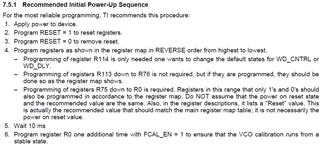I am seeing a behavior where the first attempt to lock the LMX2615 synthesizer after power on will fail, but all subsequent attempts to lock are successful. Have others observed this and any idea on possible cause?
-
Ask a related question
What is a related question?A related question is a question created from another question. When the related question is created, it will be automatically linked to the original question.


